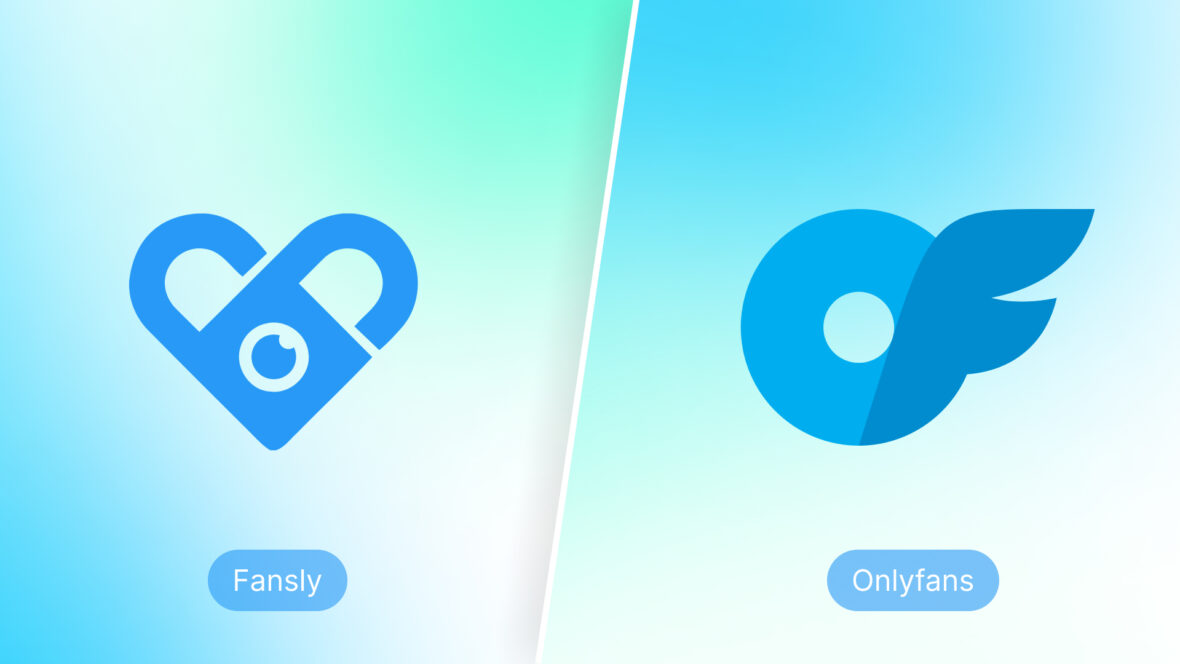OnlyFans vs Fansly: is Fansly Better Than OnlyFans?

What is the difference between OnlyFans Vs Fansly; as an adult content creator, which option for you is best to start your adult subscription business?
Introduction
In the dynamic world of online content creation and monetization, OnlyFans and Fansly stand out as two prominent platforms, each offering a unique space for creators to connect with their audiences and harness their creative potential. These platforms have garnered attention for their distinct approaches and areas of focus, making them essential players in the digital landscape.
OnlyFans has earned its reputation as a renowned online platform that empowers content creators from various walks of life. It’s a platform that thrives on the direct connection it fosters between creators and their dedicated audiences. Originally known for its association with adult content, OnlyFans quickly evolved into a hub catering to a diverse range of creators, including models, artists, influencers, and even sex workers.
During the challenging times of the pandemic, it became the primary destination for many content creators who sought personalized and engaging ways to connect with their fans. OnlyFans’ unique selling points include its subscription-based model, allowing creators to earn recurring revenue, and its unwavering emphasis on nurturing direct relationships between creators and subscribers.
Fansly, on the other hand, is a prominent online platform that caters to content creators, particularly those involved in adult and explicit content. It prides itself on providing a secure and private environment where creators can maintain control over their content while connecting with their audience.
Although Fansly is well-known for its adult content offerings, it’s important to note that it is not limited to this genre. In fact, Fansly is open to creators from all niches, making it a versatile platform that appeals to a wide-ranging audience. Creators on Fansly have the opportunity to monetize their content through subscriptions, tips, and exclusive offerings, supported by a robust community, promotional tools, and advanced analytics to optimize their content strategy.
Both options seem legit but, which one is better? We’ll dive deeper into the worlds of OnlyFans and Fansly, exploring their histories, unique features, and what sets them apart. Whether you’re a content creator looking to choose the right platform or simply curious about these digital landscapes, join us as we embark on a journey to unravel the distinctive offerings of OnlyFans and Fansly.
OnlyFans as a brand
OnlyFans was founded in 2016 by British entrepreneur Timothy Stokely. The brand’s mission centers around empowering creators to share exclusive content directly with their dedicated audiences while ensuring a secure and compliant environment for subscribers. Its core values revolve around enabling content creators to maintain creative freedom and control over their work, making it a welcoming space for a diverse range of creators, including models, artists, influencers, and more.
The platform’s emphasis on personalized and engaging content has propelled it to the forefront of the digital content landscape. By offering a subscription-based model that allows creators to earn recurring revenue, OnlyFans has redefined content monetization, providing creators with the tools they need to succeed while nurturing meaningful relationships between creators and their subscribers.
Fansly as a brand
Fansly, owned by Select Media LLC of Baltimore and CY Media LTD of Kamares, Cyprus, was founded with a mission to revolutionize the way creators connect with their audience. Michael Etelis, listed as the owner of both entities, established Select Media LLC in February 2020 and CY Media LTD in May 2021. While Michael Etelis filed multiple firms related to internet media in 2016, it’s evident that Fansly emerged later as a dynamic online platform.
Fansly’s core values are rooted in transparency, creative freedom, and user privacy. The brand is committed to empowering creators to monetize their content while fostering a vibrant and supportive community.
Fansly’s relationships with content creators are built on trust, emphasizing the brand’s commitment to helping creators succeed. This commitment to creators’ success is at the heart of Fansly’s mission and values, driving the platform’s efforts to provide a space where creators can thrive and connect meaningfully with their fans.

| Feature | Fansly | OnlyFans |
|---|---|---|
| Subscription | ($4.99 – $499.99) | ($4.99 – $50) |
| Commission rate | 20 % | 20 % |
| Tips | ✅ | ✅ |
| Referral program | 5% and 1.5% after the first year | 5% lifetime |
| Advanced analytics | ✅ | ✅ |
| Live streaming | ✅ | ✅ |
| Custom content requests | ❌ | ✅ |
| Explicit content allowed | ✅ | ✅ |
| Withdrawal methods | 3 | 5 |
All about money and earnings
Both platforms primarily operate on a revenue model where you monetize your content by offering it to subscribers for a fee. This fee can be in the form of a subscription that grants access to your photos and videos, or users can opt to pay for direct messaging privileges. Additionally, you have the potential to receive tips from generous users looking to support your work with a little extra cash.
However, it’s important to note that while both OnlyFans and Fansly follow this general structure, some competitors in the market have started to diversify income streams. For instance, they offer options like setting up an online store to sell items or clips, or the ability to sell access to exclusive private social feeds. Presently, neither OnlyFans nor Fansly provides these additional revenue avenues.
One noteworthy distinction is that Fansly allows you to implement various tiers of subscription pricing. This means you can offer lower-priced tiers for access to some of your private content while charging a premium for exclusive content like longer videos. While this feature can be advantageous for some creators, it can also mean additional management effort. Many content creators prefer a single-tier system for its simplicity in handling.
And how about earning potential? Both OnlyFans and Fansly retain a 20% commission on the earnings, whether it’s from subscriptions, tips, or direct messages. Fansly’s approach closely mirrors OnlyFans in this aspect, indicating its attempt to replicate OnlyFans’ offerings.
The key to your earnings largely depends on your ability to attract subscribers. Notably, OnlyFans holds an advantage in this regard due to its more prominent brand recognition. When you ask your followers to “subscribe to your OnlyFans,” they instantly grasp the concept and may infer that you’re sharing more explicit content. On the other hand, requesting someone to “subscribe to your Fansly” involves additional mental effort, as they might not be familiar with the platform and would need to research it. While you can certainly explain it further, this extra effort can make the selling process more challenging.
Both platforms face challenges in terms of discoverability, making it relatively difficult for casual site browsers to stumble upon your profile without a direct link. Thus, at present, OnlyFans holds an advantage due to its broader recognition, simplifying the process of building your subscriber base. However, this dynamic could shift if OnlyFans were to alter its content policies in the future.
Regarding payout frequency, OnlyFans follows a payout process where creators receive their earnings 21 days after users make payments. Creators have the flexibility to initiate withdrawals whenever they choose, as long as they’ve reached the minimum withdrawal threshold of $20.
Fansly, on the other hand, offers an even swifter payout system. Earnings become accessible after just 7 days, which represents a reduction from the previous 10-day waiting period. This adjustment, made in October 2021, signifies Fansly’s commitment to enhancing its service. While the website initially advertised a payout limit of $100, it has since aligned with a more accessible threshold of – you guessed it – $20. This change aims to facilitate quicker and easier access to creators’ hard-earned funds.
The difference between both platforms
While on Fansly, creators have the option to offer either free or paid subscriptions to showcase their content to their fan base. Fans, in turn, can choose to subscribe to the accounts of their favorite performers, whether they offer free or paid content.
Fansly distinguishes itself by aiding creators in acquiring more subscribers compared to OnlyFans. The ability for fans to follow content creators at no cost before committing to a subscription has given creators greater flexibility in promoting their channels and enticing more subscribers.
In terms of features, Fansly surpasses OnlyFans. It shares a familiar interface with OnlyFans but provides additional functionalities, including a convenient search feature to find specific creators on the platform.
Similar to OnlyFans, creators on Fansly have control over setting subscription prices. However, Fansly offers a unique feature – the option to offer various subscription tiers. For instance, many creators permit free followers to access selfies and censored content, using emojis to censor specific parts of photos for them. This censorship is lifted for paid subscribers. This multiplicity of subscription options results in a wide spectrum of costs and earnings for both creators and customers. Typically, creators charge between $5 and $15 per month for their primary paid tier.
One limitation with Fansly is that it’s lacking alternative payment options like cryptocurrency. This leaves Fansly potentially vulnerable to disruptions if major credit card companies, such as Visa and Mastercard, decide to discontinue their services, a situation that has affected platforms like Pornhub and has reportedly influenced OnlyFans’ decision to restrict adult content.

Key features available
When comparing OnlyFans to Fansly, it becomes apparent that OnlyFans doesn’t offer any exclusive features that set it apart from Fansly. Instead, it primarily relies on its brand recognition for success.
Moreover, Fansly boasts a couple of noteworthy features that provide it with a slight advantage over OnlyFans. Firstly, as previously mentioned, Fansly allows creators to establish different subscription tiers. This flexibility enables creators to charge higher fees for access to longer videos or other exclusive content.
However, the standout feature that has garnered significant popularity is the option for creators to acquire free followers. This means users can follow a creator’s account without paying for a subscription, and creators can post content that is freely accessible to these followers. It serves as an excellent way to entice potential subscribers by offering a glimpse of the content they could access with a paid subscription.
Emojis play a role in enhancing this feature – creators can incorporate custom emojis into photos to cover specific parts of the image for free followers. Once these followers decide to subscribe, they gain access to the unedited version, revealing the entire content. This approach adds an element of fun and serves as an effective self-promotion tool.
Fansly is actively working on expanding its feature set, as evidenced by their discussions on Twitter regarding upcoming developments. In contrast, OnlyFans appears to be resting on its laurels, making Fansly the clear frontrunner in terms of innovation and adaptability.
Conclusion
While OnlyFans enjoys widespread recognition, Fansly is diligently working to establish itself as a compelling alternative. For newcomers in the content creator arena, Fansly warrants consideration, especially if concerns linger about OnlyFans’ future as an adult-oriented platform.
The allure of a prominent name like OnlyFans might seem enticing, as it simplifies promotion to existing social media followers. However, when comparing the two, Fansly emerges as the platform that continually introduces a wider array of features at a brisker pace.
Nevertheless, it’s prudent to explore other alternatives in the market. Some of these alternatives offer a more extensive range of features that can enable creators to leverage their existing fan base for diversified revenue streams. You can explore these alternative platforms to identify the one that best aligns with your content creation goals and strategies.
